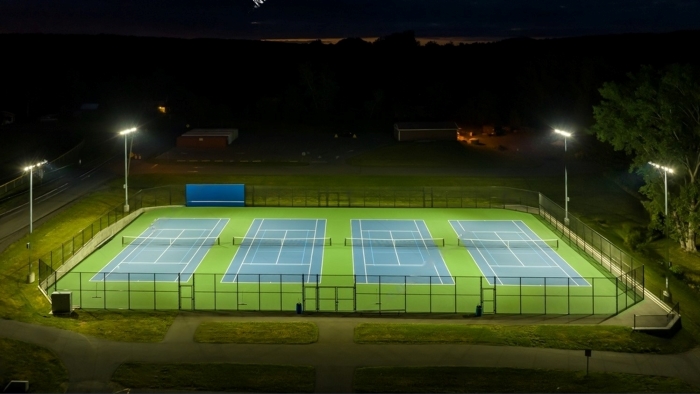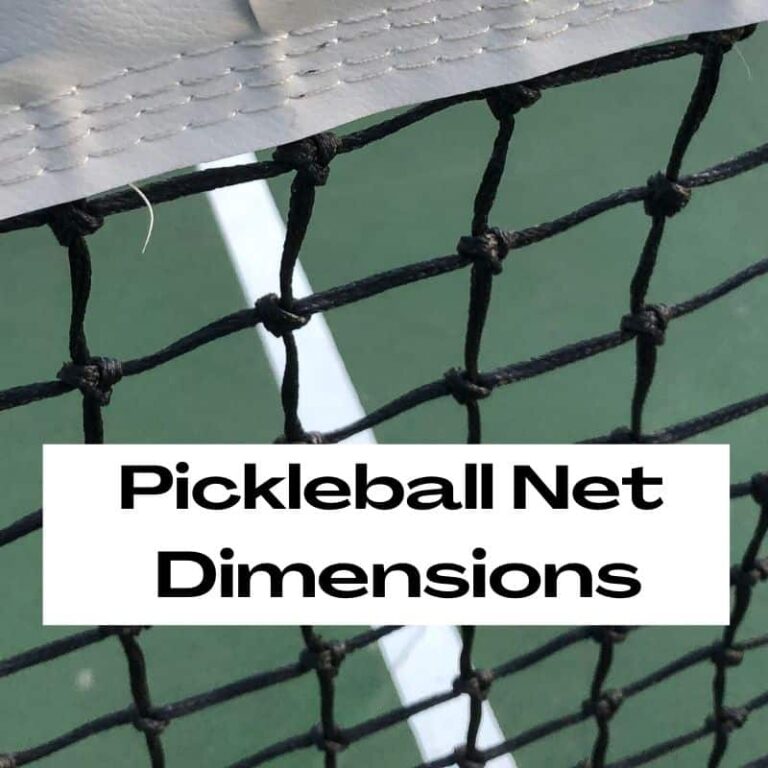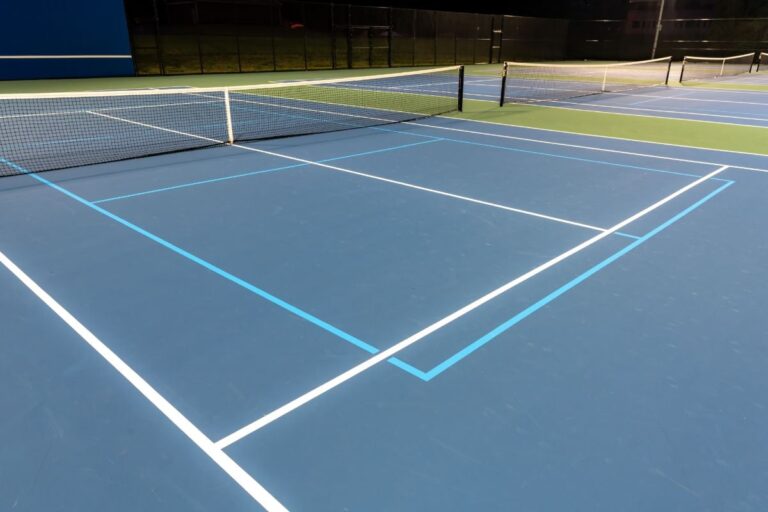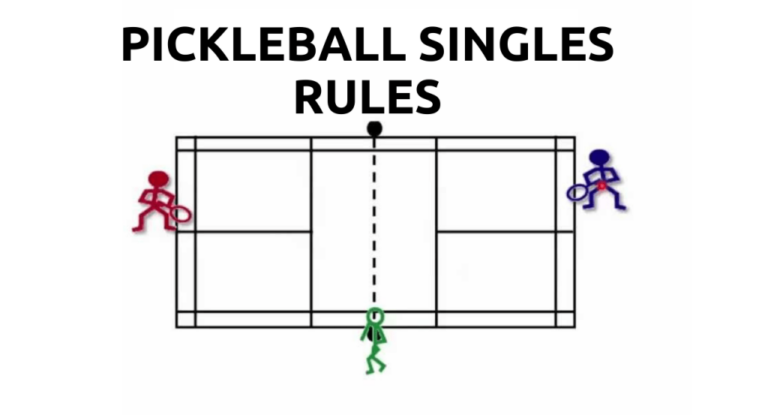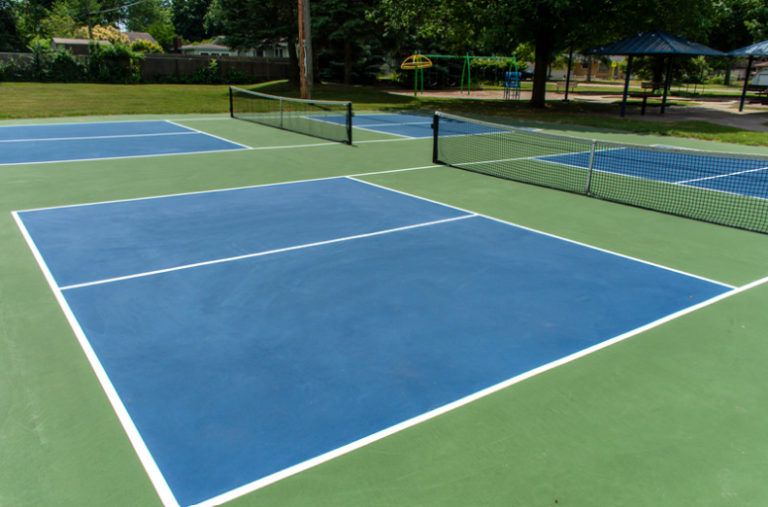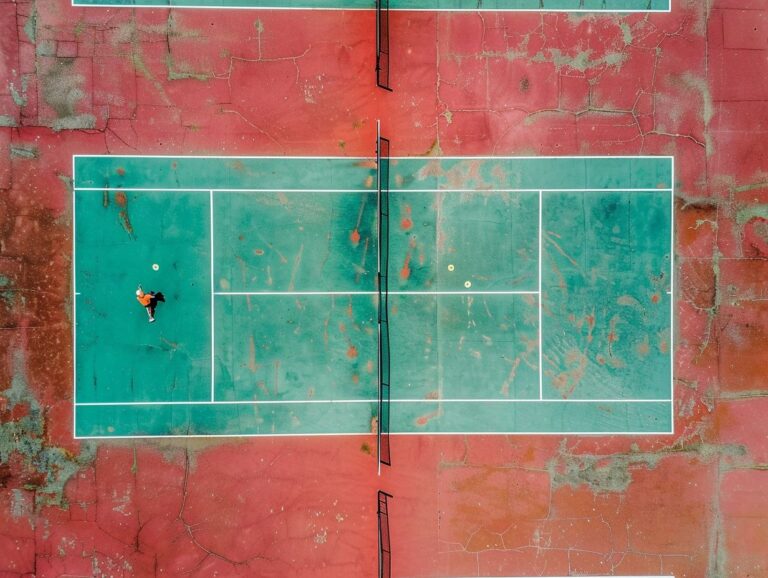The Ultimate Guide: What Is the Best Surface for a Pickleball Court?
What Is the Best Surface for a Pickleball Court?
The best surface for a pickleball court is a cushioned acrylic surface, which offers a balance of durability, playability, and player comfort. This surface provides a consistent and responsive playing experience with good traction and a moderate ball bounce. The slight cushioning helps reduce the impact on players’ joints, making it more comfortable for longer play sessions and reducing the risk of injury. While other surfaces like asphalt, concrete, clay, and grass have their pros and cons, cushioned acrylic surfaces are the most versatile and suitable option for a wide range of skill levels and playing styles.
Key Takeaways
- Choosing the best surface for a pickleball court is crucial for optimal gameplay, player safety, and overall enjoyment.
- Popular outdoor court surfaces include asphalt, concrete, and acrylic, each with its own pros and cons.
- Alternative surfaces like clay and grass offer unique playing experiences but come with higher maintenance requirements.
- When selecting a court surface, consider factors such as player skill level, climate, maintenance needs, budget, indoor vs. outdoor play, player comfort and safety, and durability.
- Cushioned acrylic surfaces are recommended as the best overall option for most pickleball courts, offering a balance of durability, playability, and player comfort.
- Regular maintenance is essential to ensure the longevity and optimal performance of any pickleball court surface.
- Investing in a high-quality, suitable surface can enhance player satisfaction, grow the sport of pickleball, and foster a thriving community at your facility.
Understanding Pickleball Basics
Before diving into the specifics of court surfaces, let’s briefly review the fundamentals of pickleball. This exciting sport combines elements of tennis, badminton, and table tennis. Players use solid-faced paddles to hit a slightly hollow plastic ball with perforated holes over a net. The game is typically played on a court that measures:
- 20 feet wide
- 44 feet long
- Net height of 36 inches at the sidelines
- Net height of 34 inches at the center
What Is a Pickleball Made Of?
The composition of the pickleball itself plays a significant role in how it interacts with different court surfaces. Pickleballs are typically made of plastic and feature a perforated design with evenly spaced holes. This unique construction allows for a consistent bounce and optimal air resistance during play.
The material and design of the pickleball affect its bounce and performance on various surfaces. For example:
- A harder surface like concrete may produce a faster and higher bounce
- A softer surface like acrylic or clay may result in a slower and lower bounce
Understanding how the ball behaves on different surfaces can help you choose the best option for your playing style and preferences.
Choosing the Right Court Surface
When it comes to selecting the perfect pickleball court surface, there are several popular options to consider. Let’s take a closer look at the top contenders for outdoor courts and explore some alternative surfaces as well.
Top Contenders for Outdoor Courts
| Surface | Pros | Cons |
|---|---|---|
| Asphalt | – Durable – Affordable – Easy to maintain |
– Retains heat – Hard on joints |
| Concrete | – Durable – Affordable – Minimal maintenance |
– Hard on joints – Prone to cracking and unevenness |
| Acrylic | – Variety of textures – Customizable colors – Excellent traction |
– More expensive than asphalt or concrete |
Asphalt
Asphalt is one of the most popular and widely used surfaces for pickleball courts. Its durability, affordability, and ease of maintenance make it an attractive choice for many players and facility owners. Asphalt courts are built by laying down a compacted base of gravel and then applying a layer of hot asphalt on top. This creates a smooth, even surface that can withstand the elements and regular play.
One of the main advantages of asphalt is its cost-effectiveness. Compared to other surfaces, asphalt is relatively inexpensive to install and maintain. It also offers good traction, allowing players to move and change direction quickly without slipping.
However, there are a few potential drawbacks to consider. Asphalt tends to retain heat, which can make playing on hot summer days uncomfortable. Additionally, the harder surface may have a higher impact on players’ joints, particularly for those with pre-existing conditions or older players.
Concrete
Concrete is another popular choice for outdoor pickleball courts, offering many of the same benefits as asphalt. It is durable, affordable, and requires minimal maintenance. Concrete courts are constructed by pouring a mixture of cement, sand, and gravel over a prepared base and then smoothing it out to create an even playing surface.
One potential advantage of concrete over asphalt is that it may provide a slightly faster playing surface. The ball tends to bounce higher and move more quickly on concrete, which can appeal to more advanced players who enjoy a faster-paced game.
However, like asphalt, concrete can be unforgiving on players’ joints due to its hardness. It may also be prone to cracking and unevenness over time, especially if not properly maintained or if exposed to extreme temperature changes.
Acrylic Courts
Acrylic coatings have gained popularity in recent years as a way to resurface existing asphalt or concrete courts. These coatings are applied in multiple layers, creating a durable and attractive playing surface that offers excellent traction and consistency.
One of the main benefits of acrylic courts is the variety of textures available. Some coatings are designed to mimic the feel of a traditional hard court, while others offer a slightly cushioned surface that can be gentler on players’ joints. This versatility allows facility owners to choose a texture that best suits their players’ needs and preferences.
Acrylic courts also come in a wide range of colors, allowing for customization and branding opportunities. The vibrant hues can make the court more visually appealing and help to define playing lines and boundaries.
However, it’s important to note that acrylic resurfacing can be more expensive than installing a new asphalt or concrete court. The cost may be justified, though, if the existing court is in good condition and only needs a new playing surface.
Exploring Alternative Outdoor Surfaces
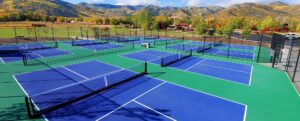
While asphalt, concrete, and acrylic courts are the most common choices for outdoor pickleball, there are a few alternative surfaces worth mentioning.
Clay Courts
Clay courts, often associated with tennis, can also be used for pickleball. These courts are more prevalent in areas with established tennis facilities and can offer a unique playing experience.
One of the defining characteristics of clay courts is their slower playing surface. The ball tends to bounce lower and move more slowly compared to harder surfaces like concrete or asphalt. This can be advantageous for players who prefer longer rallies and more strategic play.
However, clay courts require significant maintenance to keep them in optimal condition. Regular watering, rolling, and brushing are necessary to prevent cracks, unevenness, and excessive dust. This added upkeep can be time-consuming and costly, making clay courts less practical for many pickleball facilities.
Grass Courts
Grass courts, while less common, can occasionally be found at high-end pickleball facilities or in areas with ample green space. Like clay courts, grass offers a slower playing surface and a distinct playing experience.
The softer surface of grass can be more forgiving on players’ joints, providing a comfortable and enjoyable playing environment. The ball tends to sit up slightly higher on grass, allowing for more creative shot-making and rallies.
However, grass courts come with their own set of challenges. They require constant maintenance, including regular mowing, watering, and reseeding to keep the surface even and playable. Additionally, grass courts are more susceptible to wear and tear and may have limited playability during wet or muddy conditions.
Factors to Consider When Choosing a Pickleball Court Surface
With so many options available, it’s essential to consider several key factors when selecting the best surface for your pickleball court.
Player Skill Level
The skill level of the players using the court can influence the choice of surface.
- Beginners and recreational players may benefit from a slower surface like clay or some acrylic textures, as it allows for more forgiving play and longer rallies. The slower pace can help players develop their skills and build confidence on the court.
- Advanced players and competitive enthusiasts may prefer the faster pace and higher ball bounce of concrete or some acrylic textures. These surfaces allow for more aggressive play, quick reactions, and powerful shots, which can be thrilling for experienced players.
Climate and Maintenance Requirements
The local climate and maintenance requirements should also be considered when choosing a court surface.
- Asphalt and concrete are known for their durability and low maintenance needs, making them ideal for areas with harsh weather conditions or limited resources for upkeep.
- In hot climates, asphalt and concrete can retain heat, leading to uncomfortable playing conditions during the summer months. In these cases, acrylic surfaces with lighter colors or added cushioning may be a better choice, as they can help to mitigate heat retention and provide a cooler playing surface.
- Clay and grass courts, while offering unique playing experiences, come with higher maintenance requirements. Clay courts need regular watering, rolling, and brushing to maintain a consistent surface, while grass courts require frequent mowing, watering, and reseeding. These added maintenance tasks can be costly and time-consuming, making them less practical for many pickleball facilities.
Budgetary Considerations
Cost is another crucial factor to consider when selecting a pickleball court surface.
- Asphalt and concrete are generally the most budget-friendly options, as they are relatively inexpensive to install and maintain. These surfaces can provide excellent value for facilities with limited financial resources.
- Acrylic resurfacing can be more expensive than installing a new asphalt or concrete court, but it may offer advantages in specific situations. For example, if an existing court is in good condition and only needs a new playing surface, acrylic resurfacing can be a cost-effective way to upgrade the court and improve playability.
- Clay and grass courts are typically the most expensive options due to their higher installation and maintenance costs. These surfaces may be more suitable for high-end facilities or those with ample financial resources to dedicate to court upkeep.
Indoor vs. Outdoor Play
The choice between an indoor or outdoor pickleball court can also influence the selection of the playing surface.
- Indoor courts often feature hardwood or synthetic flooring, which can provide a consistent and comfortable playing experience year-round.
- Outdoor courts must withstand the elements and varying weather conditions. Asphalt, concrete, and acrylic surfaces are popular choices for outdoor courts due to their durability and resistance to weathering. Clay and grass courts, while less common outdoors, can offer a unique playing experience in the right climate and with proper maintenance.
Player Comfort and Safety
Player comfort and safety should be top priorities when choosing a pickleball court surface.
- Harder surfaces like concrete and asphalt can be more jarring on players’ joints, particularly for those with pre-existing conditions or older players. In these cases, a cushioned acrylic surface or a softer option like clay may be more forgiving and reduce the risk of injury.
- Proper traction is also essential for player safety. Surfaces with good grip allow players to move and change direction quickly without slipping, reducing the risk of falls and injuries. Acrylic coatings and textured surfaces can provide excellent traction, even in wet conditions.
Durability and Longevity
Investing in a durable and long-lasting pickleball court surface can save money and hassle in the long run.
- Asphalt and concrete are known for their durability, with properly maintained courts lasting for decades.
- Acrylic coatings can also extend the life of existing courts by providing a protective layer against wear and tear.
- Clay and grass courts, while offering unique playing experiences, may have shorter lifespans due to their higher maintenance requirements and susceptibility to damage from weather and heavy use.
The Best Surface for Pickleball Courts
After considering the various options and factors, it’s clear that there is no one-size-fits-all answer to the question of the best surface for pickleball courts. The ideal surface will depend on the specific needs, preferences, and resources of each facility and its players.
However, based on our analysis, we recommend cushioned acrylic surfaces as the best overall option for most pickleball courts. These surfaces offer a balance of durability, playability, and player comfort, making them suitable for a wide range of skill levels and playing styles.
Cushioned acrylic surfaces provide:
- Consistent and responsive playing experience
- Good traction
- Moderate ball bounce
- Slight cushioning to reduce impact on players’ joints
- Increased comfort for longer play sessions
- Reduced risk of injury
Additionally, acrylic surfaces come in a variety of colors and textures, allowing for customization and branding opportunities. The vibrant hues can enhance the visual appeal of the court and help to define playing lines and boundaries.
While the initial cost of installing a cushioned acrylic surface may be higher than some other options, the long-term benefits in terms of player satisfaction, reduced maintenance, and extended court life can make it a worthwhile investment.
Maintaining Your Pickleball Court Surface
Regardless of the surface you choose for your pickleball court, regular maintenance is essential to ensure its longevity and optimal performance. Here are some tips for keeping your court in top condition:
- Clean the surface regularly to remove dirt, debris, and leaves. Use a leaf blower, broom, or pressure washer as needed.
- Repair any cracks or damage promptly to prevent further deterioration. Consult with a professional for the best repair methods based on your court surface.
- Apply a fresh coat of acrylic or sealant every few years to protect the surface and maintain its appearance.
For clay courts:
- Regularly water, roll, and brush the surface to maintain consistency and prevent cracks.
For grass courts:
- Mow, water, and reseed as needed to keep the surface even and playable.
By investing time and resources into proper court maintenance, you can extend the life of your pickleball court and ensure that it remains a safe and enjoyable playing surface for years to come.
Conclusion
Choosing the best surface for your pickleball court is a crucial decision that can impact player satisfaction, safety, and the overall success of your facility. By understanding the various options available and considering factors like skill level, climate, maintenance requirements, budget, and player comfort, you can make an informed choice that meets the needs of your players and your facility.
While cushioned acrylic surfaces offer a balanced and versatile option for most pickleball courts, it’s essential to weigh the pros and cons of each surface type and select the one that best aligns with your specific goals and resources.
Remember, the right court surface can enhance the enjoyment and longevity of playing pickleball, so take the time to research and invest in a high-quality surface that will serve your players well for years to come. By providing a safe, comfortable, and enjoyable playing experience, you can help to grow the sport of pickleball and foster a thriving community of players at your facility.

